How to grow verbena – the best ways to plant, water and prune this drought-tolerant plant for beautiful sprays of flowers
Bees and butterflies love it!

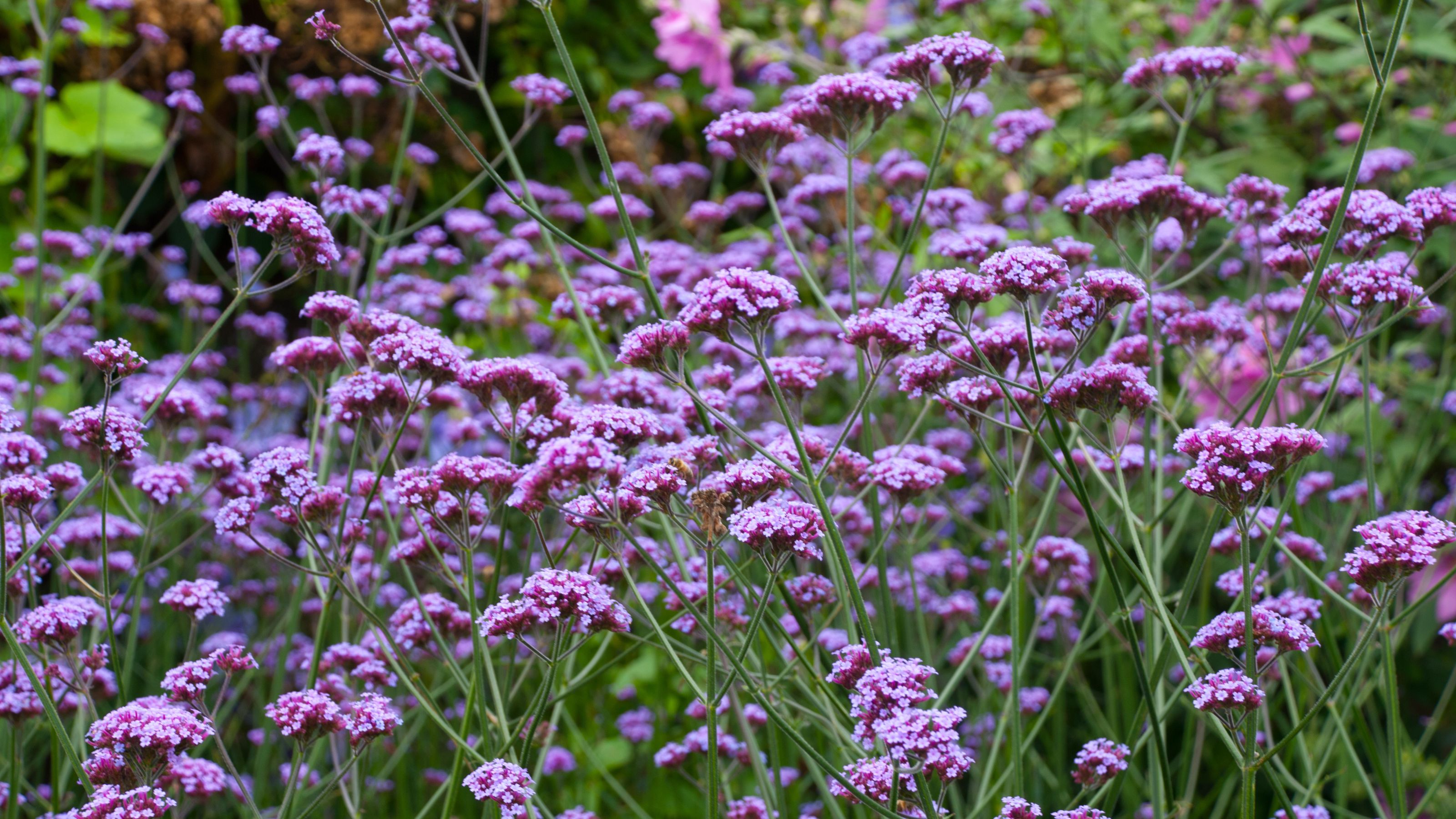
Looking for a flowering plant that’s loved by bees, eye-catching and easy to grow? Learn how to grow verbena.
As one of the best drought-tolerant plants out there, verbena is a super low-maintenance border plant that flowers effortlessly, adding height and structure to a garden. Many varieties are perennial, meaning they’ll reappear every spring and bloom from summertime up to the first frosts.
If you’re keen on growing verbena, take a look at our guide below. We’ve covered everything from choosing your plant to watering and pruning, with expert pointers to help us along the way.
1. Choosing your verbena
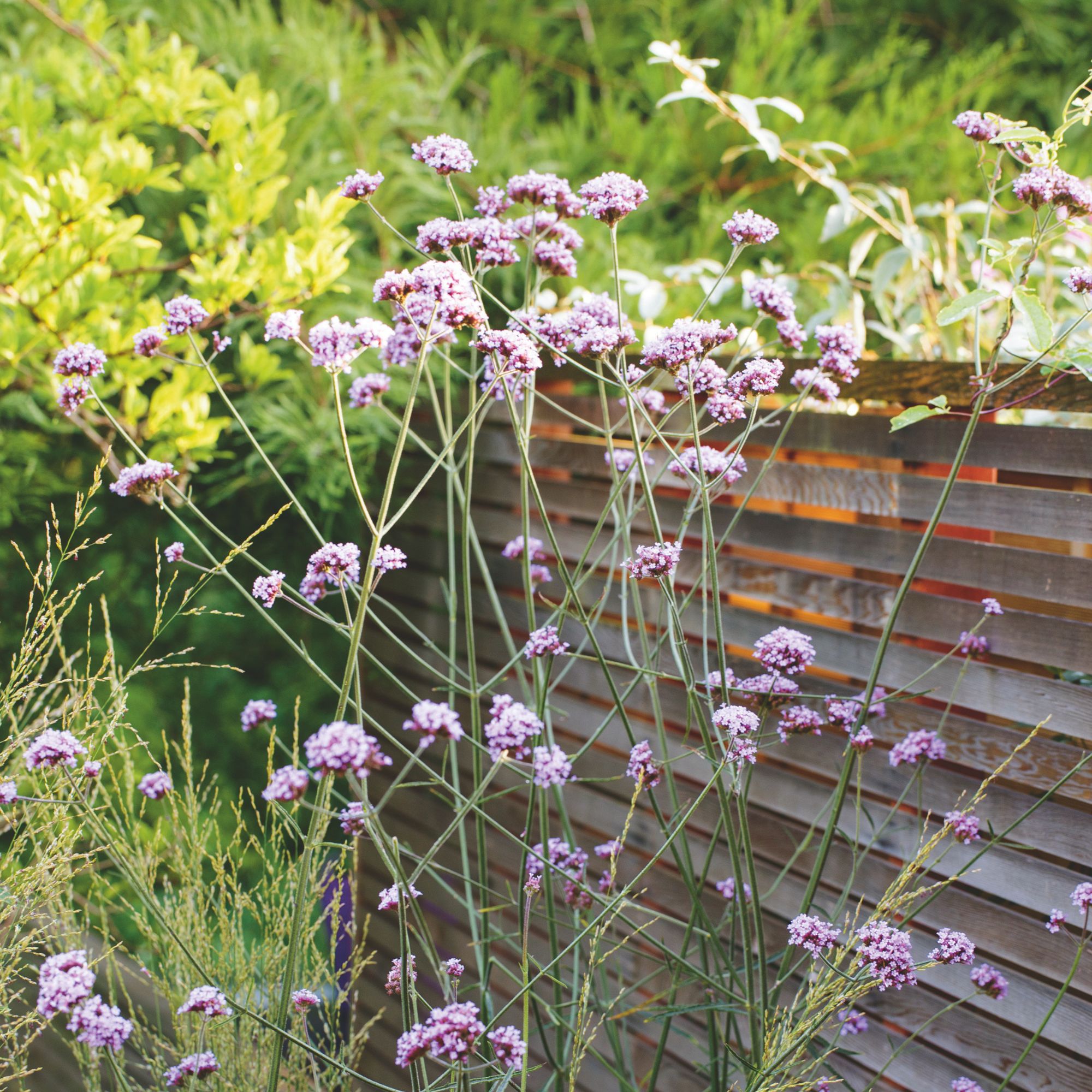
There are a few different types of verbena to choose from, and the variety you go for will depend, in part, on where you want to grow it.
Verbena bonariensis, which you can buy at Crocus from £4, is one of the most popular types. It’s tall, so it’s perfect for adding architectural interest to garden borders. Like other types of verbena, Verbena bonariensis is a perennial you can grow from seed, but it will also seed itself.
‘Verbena bonariensis will liberally cast seed all over your borders, ensuring a steady supply of fresh seedlings to replace older, woody plants,’ says Annelise Brilli, Thompson & Morgan’s horticultural copywriter. ‘On loose, well-drained soils, they can become a bit of a nuisance, so ruthlessly hoe out unwanted seedlings to keep them in check.’
If you’re looking for something a little shorter but you’re still after one of the best plants for bees, try Verbena rigida.
Sign up to our newsletter for style inspiration, real homes, project and garden advice and shopping know-how
‘Verbena rigida is a lovely low-growing verbena for softening the edge of a border,’ says Annelise. You can buy potted Verbena rigida plants at Thompson & Morgan from £19.99.
2. Location
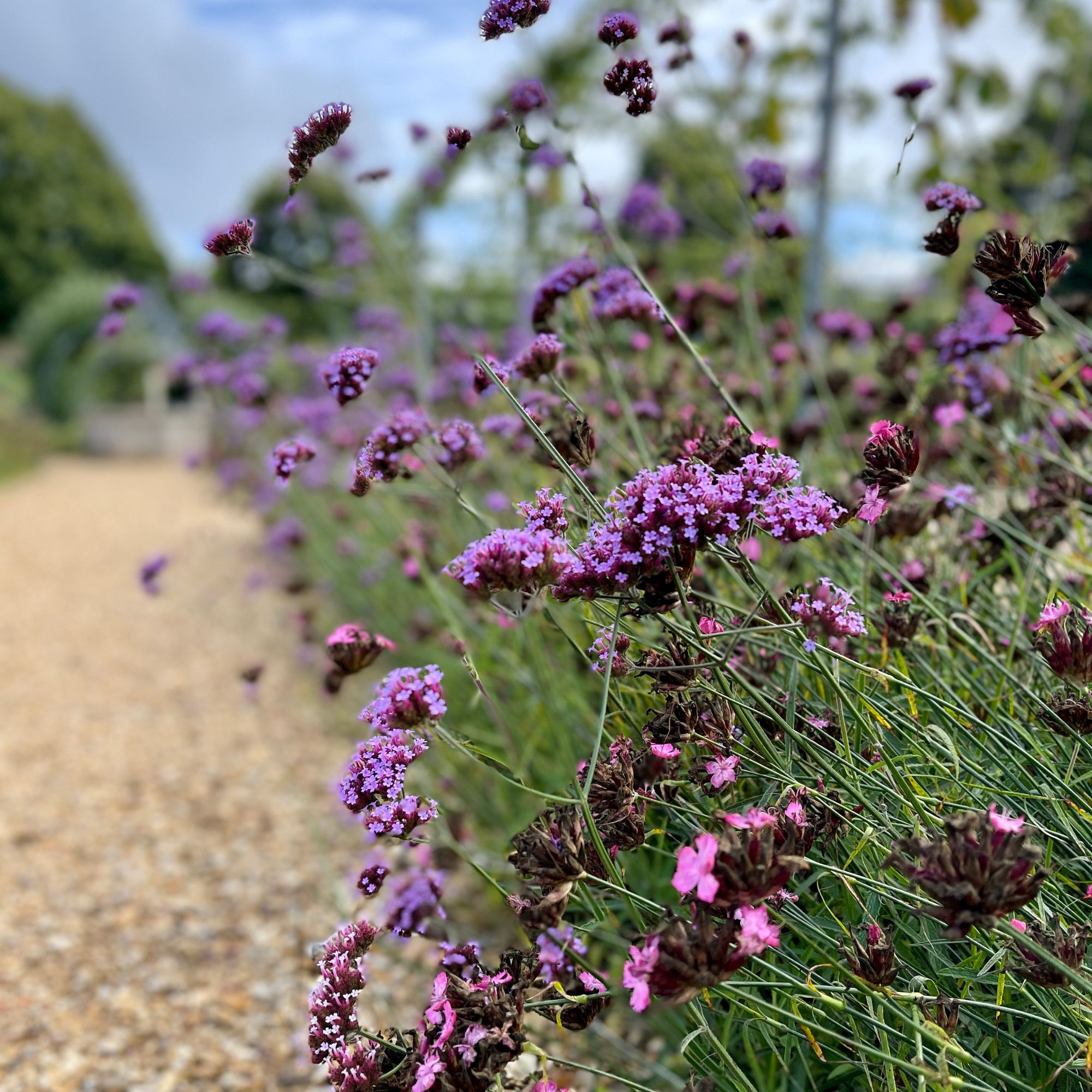
Verbena is a huge fan of the sunshine, so you’ll want to choose a spot that receives full sun. Avoid heavy soils, too.
'Verbena loves to be in well-drained, sunny spots, and has always grown equally well in pots and the ground here at Beningbrough,’ says Sam Shipman, head gardener at the National Trust’s Beningbrough in North Yorkshire, which is home to a new Mediterranean garden.
Verbena thrives in low-nutrient soils, so you don’t need to worry about improving the soil before planting. Some horticultural sand, or something like Westland’s Potting Grit from Amazon, can improve drainage where necessary, though.
3. Planting
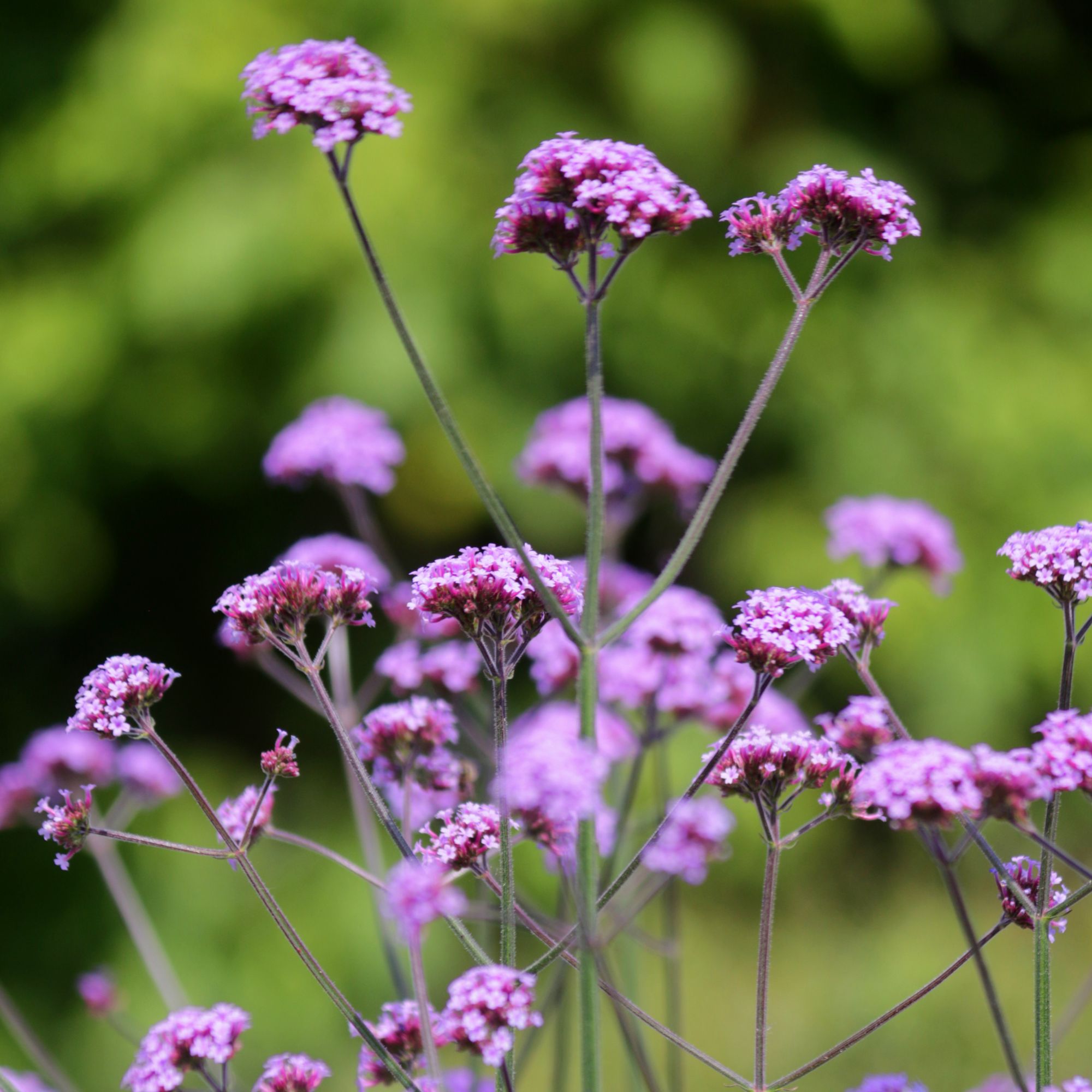
You can either sow verbena from seed or plant bare root or garden-ready plants straight into your garden.
If you’ll be sowing the seeds under cover, you can get started from February onwards, before hardening the seedlings off and planting them out when the weather warms up. Or, you can sow them directly into the ground or pots outdoors once the last risk of frost has passed.
If you’ll be skipping the sowing stage and planting verbena instead, the process is relatively straightforward.
‘When planting, dig holes that are as deep and wide as the root ball, and water thoroughly after planting to help them establish,’ says Liam Cleary, outdoor plants expert at Old Railway Line Garden Centre.
4. Watering and feeding
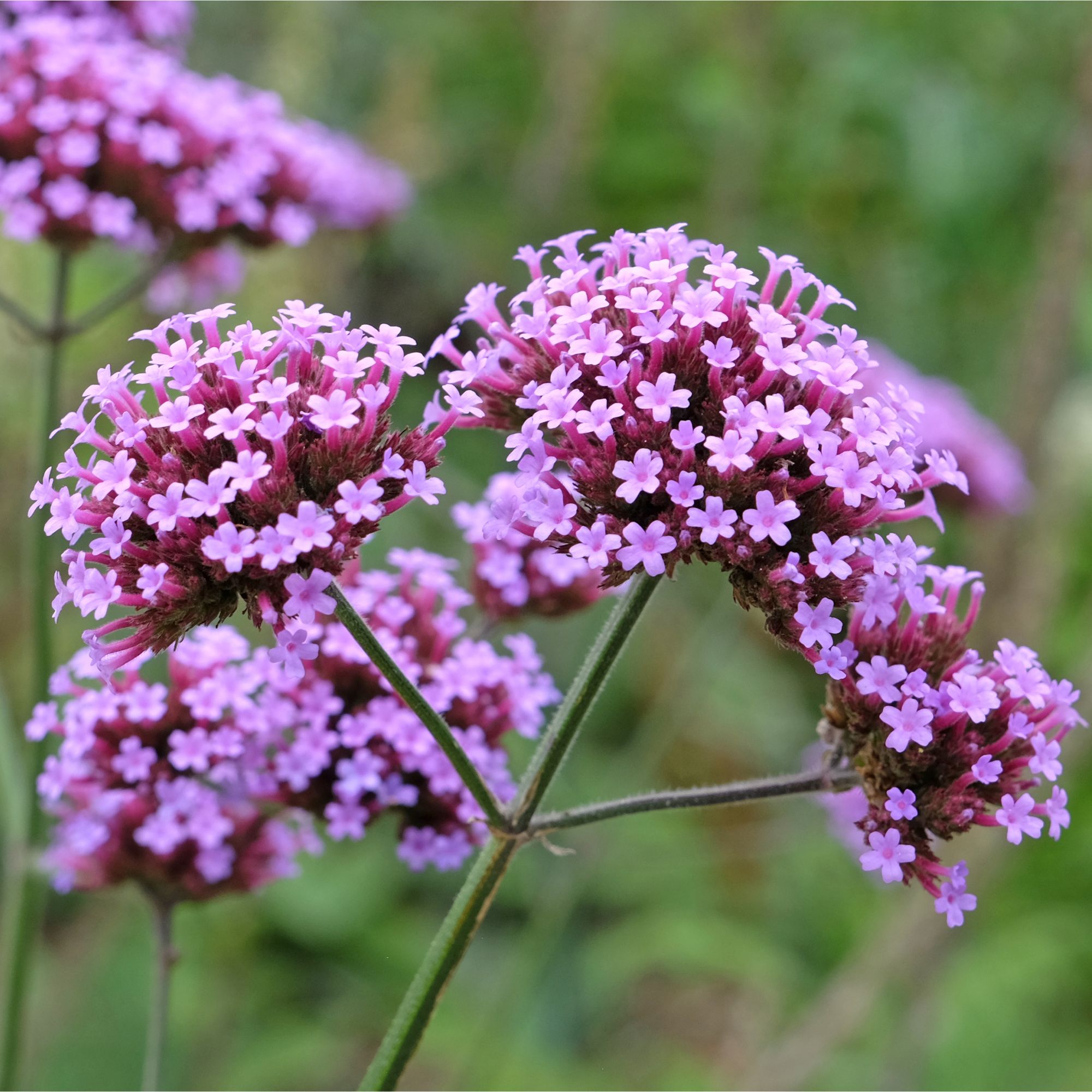
Since verbena is drought-tolerant, it won’t need much in the way of watering, but only after it’s established.
‘Once established, it will sail through drought without the need for watering,’ says Annelise.
Fertiliser can impair flowering if you overdo it, and it isn’t necessary for verbena in borders – but if you’re thinking about growing verbena in containers (it's one of the best plants for hanging baskets), occasional feeding won’t hurt.
‘While not heavy feeders, verbena benefits from monthly fertilisation,’ says Liam. ‘A top tip is to use a balanced, slow-release fertiliser to encourage continuous blooming.’
5. Deadheading and cutting back
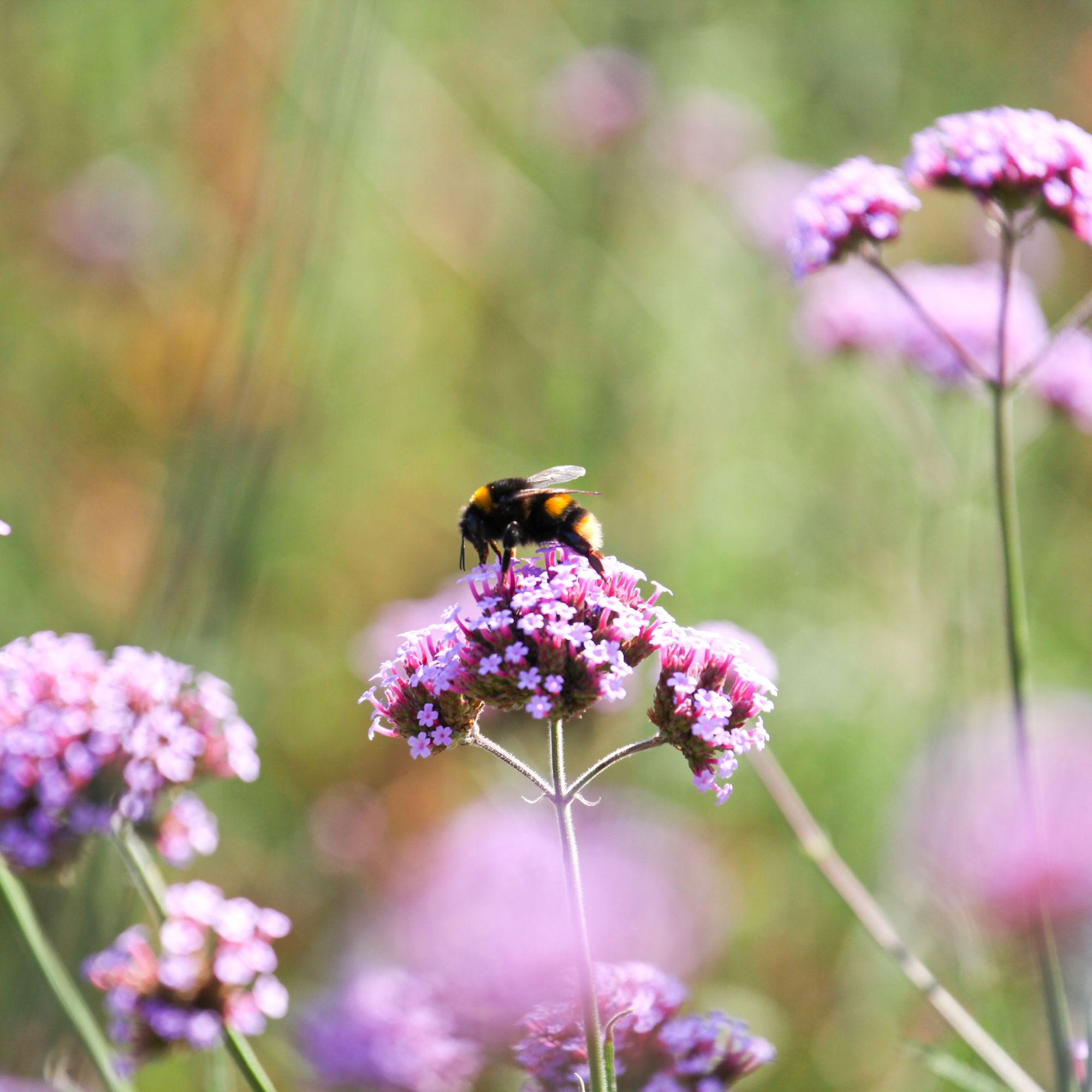
If you’re wondering whether you should deadhead these perennials, the answer is no, at least, you don’t need to.
‘I would not deadhead as they will happily seed around into the garden and you can simply weed out the ones you don’t want next year,’ says the National Trust’s Sam. ‘This is a wonderful way to create a more natural garden look, especially in dry or gravel gardens.’
Experts do recommend cutting verbena back every now and then, though.
‘I give my Verbena bonariensis a modest ‘Chelsea chop’ in May, cutting them down by about a third,’ says Annelise. ‘This results in stockier, shorter plants with more flowering side shoots.’
You can also cut verbena back in the autumn to give them extra stability.
‘Verbenas have shallow root systems, and the taller ones can rock about in the soil, especially if left standing over winter,’ explains Annelise. ‘To prevent this, cut them back to around 10cm in autumn to help them stay anchored and encourage healthy regrowth in spring.’
6. Propagating
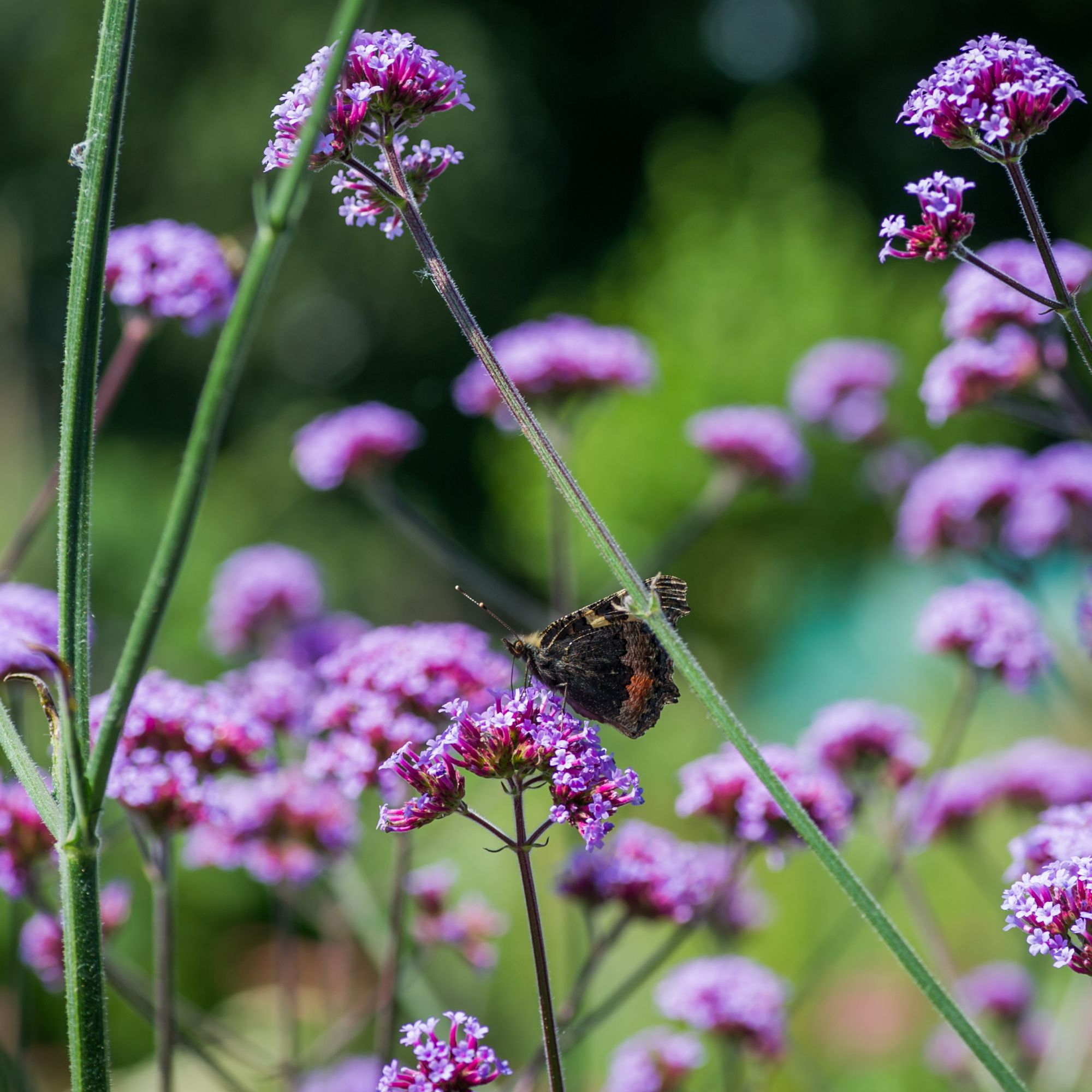
Verbena is one of the top plants you can propagate in July, for free plants you can share with family and friends or spread around the garden.
‘Taking cuttings is a good way to ensure plants for the following year, especially in colder areas,’ says Liam.
Semi-ripe cuttings can be taken in late summer, while softwood cuttings can be collected in spring and early summer.
Learning how to grow verbena couldn't be simpler: it's low-maintenance, pollinator-friendly, and one of the best perennial plants out there.

Sophie joined the Ideal Home team as Gardens Editor in June 2024. After studying English at Royal Holloway, University of London, she began writing for Grow Your Own, which spurred on her love of gardening. She's tried growing almost every vegetable under the sun, and has a soft spot for roses and dinnerplate dahlias.
As Gardens Editor, Sophie's always on the lookout for the latest garden trend. She loves sharing growing hacks for every space, from herbaceous borders to balconies.